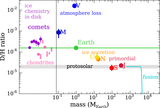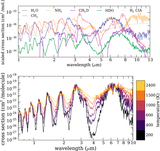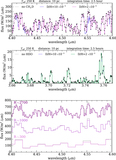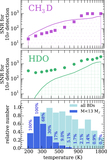Image Details
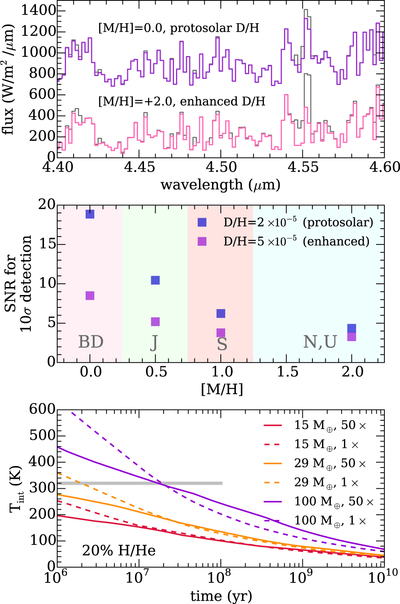
Caption: Figure 5.
Top panel: model spectra, offset for clarity, of a 320 K, g = 15 m s−2, cloud-free object; top model is solar metallicity, with no CH3D (gray line) and a protosolar (2 × 10−5) D/H ratio (purple line); bottom model is 100× solar metallicity with no CH3D (gray line) and enhanced (5 × 10−5) D/H ratio (pink line). Middle panel: S/N per spectral element needed to detect CH3D as a function of metallicity for protosolar and enhanced D/H ratios for a planet with T = 320 K, g = 15 m s−2. CH3D is easier to detect in high-metallicity objects and for enhanced D/H ratios. Regions are shaded according to the metallicities of local brown dwarfs and solar system giant planets. Bottom panel: intrinsic temperatures of model planets over time for solar and 50× solar metallicity atmospheric boundary conditions, assuming a 20% H/He planet by mass. The 320 K temperature modeled above corresponds to a 20 Myr Saturn-mass planet or a 1–2 Myr super-Neptune.
Copyright and Terms & Conditions
© 2019. The American Astronomical Society. All rights reserved.


